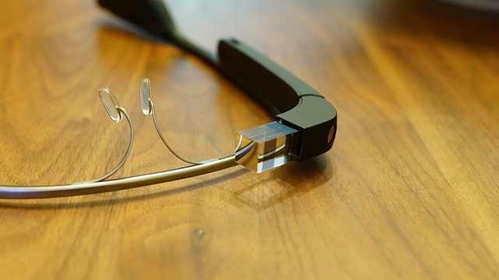Google Glass makes accessing EHR information quicker, easier
Meaningful use requirements are generally meant to prompt health care organizations to up their electronic health record system usage, though the program is expanding beyond just that. With new technologies occupying new needs within the medical industry, companies must always be aware of how their workflows may be improved by adopting a new piece of technology to their practices.
One of those innovative devices is Google's Glass hardware. Glass is a hands-free, wearable device similar to a prescription pair of sunglasses. However, over one eye is a clear screen that constantly records video and sounds and displays information to the person wearing it. The device's announcement resulted in wild speculation over the technology's uses, but few imagined that it would be adopted by the health care industry.
According to The Boston Globe, physicians in the emergency department at Beth Israel Deaconess Medical Center in Boston have begun wearing Glass during their shifts. The switch has resulted in greater and quicker access to information for doctors and has saved at least one life, the paper reported. As health care organizations seek to streamline their use of EHR information, Glass may develop into a solution to that problem.
Practicing medicine with Glass
Steven Horng, M.D., was working late one night at BIDMC when a patient entered the emergency room complaining of head pain. Horng quickly diagnosed the condition as bleeding in the brain, but when the patient informed him that he was not sure if he was allergic to certain medications, Horng was in trouble.
Rather than wasting time searching through the patient's paper medical history or calling past physicians, Horng used Glass to quickly access the man's information without leaving his side. He administered the correct medication and saved the man from serious health effects.
"We're doing this to prove that the technology can work and really motivate others to explore this space with us," Horng told The Boston Globe. "Rather than having to excuse myself, [using Glass] means I can quickly access that information without having to interrupt the patient, lose eye contact or even leave the room."
Horng explained how he is able to pull up the EHR of any patient in a matter of seconds with his Glass. As opposed to the commercial versions of the devices that are expected to be released in late 2014, BIDMC programmed all of its Glass devices to be particularly suited to – and secure enough for – medical administration tasks.
Data security and Google Glass
John Halamka, M.D., chief information officer at BIDMC, told Health Data Management that even though the Glass program has been a success within the emergency department, there are still some pressing concerns about wider use of the technology within his organization and the industry as a whole.
The recent popularity of mobile health solutions has outstretched companies' abilities to secure networks of unknown devices. Halamka explained that if the program is expanded to BIDMC's other departments, the Glass headsets are unlikely to be treated as personal property and rather as hospital equipment that stays at the facility. Because the devices can capture and upload photographs and videos automatically, keeping them on company property may make it easier for administrators to keep track of what data goes where.
Still, Halamka told Health Data Management that the increase in workflow efficiency that BIDMC has experienced due to Glass makes the technology a "productivity enhancement that doctors need."
As Google prepares for a commercial launch of Glass later this year, physicians will seek to further adapt the device to medical uses. Though BIDMC was the first hospital to adopt the technology, it is unlikely to be the last.



